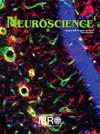Therapeutic potential of astrocyte-derived extracellular vesicles in mitigating cytotoxicity and transcriptome changes in human brain endothelial cells
IF 2.9
3区 医学
Q2 NEUROSCIENCES
引用次数: 0
Abstract
This study investigates the therapeutic effect of astrocyte-derived extracellular vesicles (EVs) in mitigating neurotoxicity-induced transcriptome changes, mitochondrial function, and base excision repair mechanisms in human brain endothelial cells (HBECs). Neurodegenerative disorders are marked by inflammatory processes impacting the blood–brain barrier (BBB) that involve its main components- HBECs and astrocytes. Astrocytes maintain homeostasis through various mechanisms, including EV release. The effect of these EVs on mitigating neurotoxicity in HBECs has not been investigated. This study assesses the impact of astrocyte-derived EVs on global transcriptome changes, cell proliferation, cytotoxicity, oxidative DNA damage, and mitochondrial morphology in HBECs exposed to the neurotoxic reagent Na2Cr2O7. Exposure to Na2Cr2O7 for 5 and 16 h induced oxidative DNA damage, measured by an increase in genomic 8OHdG, while the EVs reduced the accumulation of the adduct. A neurotoxic environment caused a non-statistically significant upregulation of the DNA repair enzyme OGG1 while the addition of astrocyte-derived EVs was associated with the same level of expression. EVs caused increased cell proliferation and reduced cytotoxicity in Na2Cr2O7-treated cells. Mitochondrial dysfunction associated with a reduced copy number and circular morphology induced by neurotoxic exposure was not reversed by astrocyte-derived EVs. High-throughput RNA sequencing revealed that exposure to Na2Cr2O7 suppressed immune response genes. The addition of astrocyte-derived EVs resulted in the dysregulation of long noncoding RNAs impacting genes associated with brain development and angiogenesis. These findings reveal the positive impact of astrocytes-derived EVs in mitigating neurotoxicity and as potential therapeutic avenues for neurodegenerative diseases.
星形胶质细胞衍生的细胞外囊泡在减轻细胞毒性和人脑内皮细胞转录组变化方面的治疗潜力
本研究调查了星形胶质细胞衍生的细胞外囊泡(EVs)在减轻神经毒性诱导的转录组变化、线粒体功能和人脑内皮细胞(HBECs)碱基切除修复机制方面的治疗效果。神经退行性疾病以影响血脑屏障(BBB)的炎症过程为特征,涉及其主要成分--HBECs 和星形胶质细胞。星形胶质细胞通过包括 EV 释放在内的各种机制维持体内平衡。这些 EV 对减轻 HBEC 神经毒性的影响尚未得到研究。本研究评估了星形胶质细胞衍生的 EV 对暴露于神经毒性试剂 Na2Cr2O7 的 HBECs 的全局转录组变化、细胞增殖、细胞毒性、氧化 DNA 损伤和线粒体形态的影响。暴露于Na2Cr2O7 5小时和16小时可诱导氧化DNA损伤(通过基因组8OHdG的增加来测量),而EVs可减少加合物的积累。神经毒性环境会导致DNA修复酶OGG1的上调,但无统计学意义,而加入源自星形胶质细胞的EVs则会导致相同水平的表达。在 Na2Cr2O7 处理过的细胞中,EVs 增加了细胞增殖,降低了细胞毒性。神经毒性暴露诱发的线粒体功能障碍与拷贝数减少和圆形形态有关,但星形胶质细胞衍生的EVs并不能逆转这种功能障碍。高通量 RNA 测序显示,暴露于 Na2Cr2O7 会抑制免疫反应基因。加入星形胶质细胞衍生的EVs会导致长非编码RNA失调,影响与大脑发育和血管生成相关的基因。这些发现揭示了星形胶质细胞衍生的EVs在减轻神经毒性方面的积极影响,也是治疗神经退行性疾病的潜在途径。
本文章由计算机程序翻译,如有差异,请以英文原文为准。
求助全文
约1分钟内获得全文
求助全文
来源期刊

Neuroscience
医学-神经科学
CiteScore
6.20
自引率
0.00%
发文量
394
审稿时长
52 days
期刊介绍:
Neuroscience publishes papers describing the results of original research on any aspect of the scientific study of the nervous system. Any paper, however short, will be considered for publication provided that it reports significant, new and carefully confirmed findings with full experimental details.
 求助内容:
求助内容: 应助结果提醒方式:
应助结果提醒方式:


